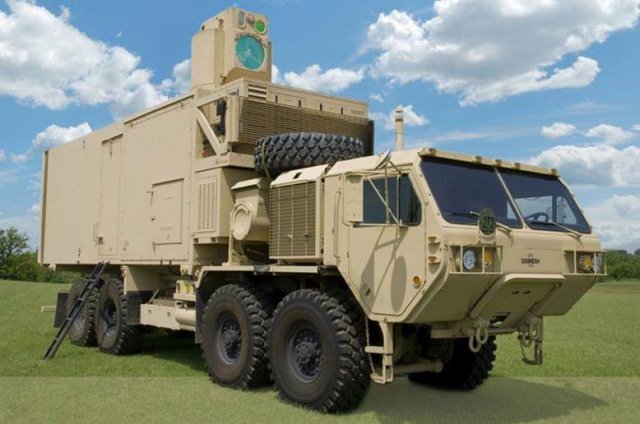Army Turns To Lockheed For Alternative Laser
Posted on

Army HEL (High Energy Laser) Mobile Demonstrator. Made by Boeing.
HUNTSVILLE, ALA.: The Army is entering a new Cooperative Research & Development Agreement (CRADA) for a laser weapon with defense titan Lockheed Martin, the head of Space & Missile Defense Command said today. The service’s ultimate goal is lasers light, compact, and capable enough to protect advancing troops.
The Lockheed agreement, not yet formally announced, will lead up to a live-fire test against drones and mortar rounds at White Sands Missile Range next summer. Lt. Gen. David Mann hopes to bring other companies in on the test as well.
“We’re…establishing a CRADA with Lockheed Martin, but we’re also opening the aperture to allow other industry partners to show us what they can bring to the table,” Mann told reporters at the Space & Missile Defense conference here.
The CRADA and live fire will run “in parallel” to the Army’s existing HEL-MD program, the Boeing-built, truck-mounted High Energy Laser Mobile Demonstrator, Mann said. “That’s kind of a proof of principle…. to take the different components, put it on a vehicle, and show that the concept is viable,” he said of HEL-MD.
HEL-MD currently mounts an off-the-shelf 10-kilowatt laser, but it will be upgraded next year to a custom-built 50-60 kW weapon, with potential for 100 kW and above. It’s already shot down drones and mortar rounds, and the higher power levels should make it capable against rockets and even artillery shells.
But Mann doesn’t want to place all his bets on HEL-MD without exploring alternatives. “We want to make sure we avail ourselves of potential industry technologies that maybe we have not considered,” he said. Space & Missile Defense Command will reach out to industry “to see what kind of technologies they have which may be relevant and to show us their effectiveness in a live-fire test we want to do next summer, FY ’16.”
“it’s very important that we get this right, before we go down a road [to] making investments to capabilities that will travel with the maneuver force,” Mann said,
That kind of mobile, ground-based laser, advancing with combat brigades through the dust and mud, is very different from the weapons the other services are pursuing. The Navy has a laser on a ship, the Air Force wants lasers that fit on planes, the Missile Defense Agency wants lasers with the power and range to shoot down high-performance ICBMs.
“There is some concern out there that maybe the services are being redundant, [but] it reflects the importance of that technology,” Mann told the conference in his public remarks. “The services are using this technology to look at different threat sets.”
That said, there’s one crucial challenge all the disparate programs have in common, he said: “The issue that we have, though, is to make sure that we work expectation management very, very closely and not promise something before it’s time.”
No wonder that Mann was very cagey when I asked about “non-kinetic” missile defenses that aren’t lasers, such as cyber weapons and electronic warfare. (Kinetic weapons physically explode or impact the target; non-kinetic weapons use photons and electrons or other things that don’t go boom).
“Just trust me when I say that there are some very exciting and promising technologies out there,” Mann told reporters. “Some of them are very, very classified, very, very compartmentalized programs, so I can’t go into a lot of specific areas. Trust me when I say though that all the services are looking at non-kinetic solutions to these threat sets….We’re investigating them and they have proven themselves to be quite capable of helping us address the missile threat that’s out there.”
{Those who follow our coverage of the F-35 program will know that AESA digital radar can be used for electronic and cyber warfare. This may be an example of the sort of thing the services are exploring.)
“The big takeaway,” Mann said, “is it’s a wide spectrum of capabilities that we have to address this threat set. You can look at non-kinetic, but it’s not a be-all end-all. You can look at directed energy, but it’s not a be-all end-all.” Kinetic interceptors are “proven,” but we can’t afford enough to take out every incoming Scud.
So the solution, Mann said, is a complex layered defense that gives them enemy “a lot of different things they’ve going to have to address… interceptors, directed energy, non-kinetic, cyber.”
Subscribe to our newsletter
Promotions, new products and sales. Directly to your inbox.
